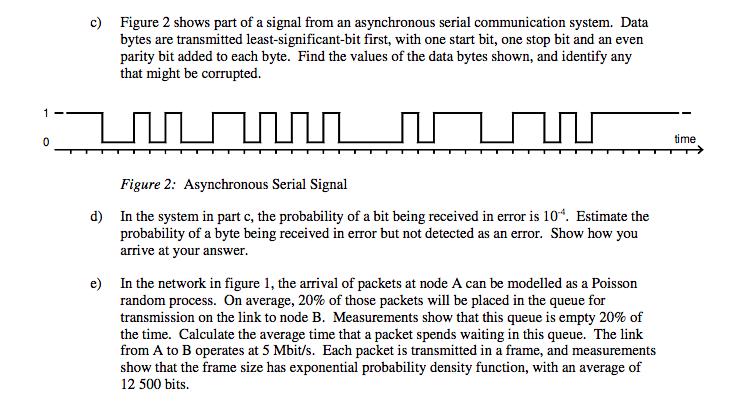Answered step by step
Verified Expert Solution
Question
1 Approved Answer
1 0 c) Figure 2 shows part of a signal from an asynchronous serial communication system. Data bytes are transmitted least-significant-bit first, with one

1 0 c) Figure 2 shows part of a signal from an asynchronous serial communication system. Data bytes are transmitted least-significant-bit first, with one start bit, one stop bit and an even parity bit added to each byte. Find the values of the data bytes shown, and identify any that might be corrupted. Figure 2: Asynchronous Serial Signal d) In the system in part c, the probability of a bit being received in error is 10. Estimate the probability of a byte being received in error but not detected as an error. Show how you arrive at your answer. e) In the network in figure 1, the arrival of packets at node A can be modelled as a Poisson random process. On average, 20% of those packets will be placed in the queue for transmission on the link to node B. Measurements show that this queue is empty 20% of the time. Calculate the average time that a packet spends waiting in this queue. The link from A to B operates at 5 Mbit/s. Each packet is transmitted in a frame, and measurements show that the frame size has exponential probability density function, with an average of 12 500 bits. time
Step by Step Solution
There are 3 Steps involved in it
Step: 1

Get Instant Access to Expert-Tailored Solutions
See step-by-step solutions with expert insights and AI powered tools for academic success
Step: 2

Step: 3

Ace Your Homework with AI
Get the answers you need in no time with our AI-driven, step-by-step assistance
Get Started


